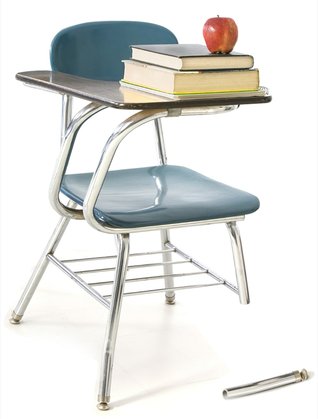Sunday, Aug. 24, 2008 | 2 a.m.
View more of the Sun's opinion section
In August, Brian Greenspun turns over the Where I Stand column to guest writers. Today’s columnist is Walt Rulffes, superintendent of the Clark County School District.
When a boat is dangerously overloaded, do you jettison the life preservers to lighten the load? Sounds crazy, but that is what’s happening in Nevada.
Education is the surest protection against becoming nonproductive and noncompetitive, yet, in this time of economic crisis, many in state government seek an easy fix and would throw K-12 overboard. If not for a few allies in the Legislature, both K-12 and higher education would have suffered even greater damage than they have to date.
As a former chief financial officer in both public and private organizations, I recognize the gravity of Nevada’s current financial condition and the need to cut costs where possible. But, as your current superintendent, I also recognize the disservice being done to Nevada’s next generation of adults.
Make no mistake about it, education in Nevada is hurting. Clark County receives the lowest per-pupil funding in the state, and the state funds its students at one of the lowest rates in the nation. That puts the Clark County School District near the bottom of the nation in per-pupil funding. Cuts of the magnitude we are experiencing are making a bad situation worse.
So, now that we have cut $133 million from the Clark County School District’s budget, and the ship continues to founder, what goes overboard next?
The uninformed are fond of the knee-jerk response that the district is top heavy and could save millions by sending administrators back to classrooms. When I ask these folks how many administrators we have, or how many we should have, they have absolutely no idea. In other words, they offer a sound bite without thought or merit.
The fact is, about one of every 38 employees is an administrator, which accounts for 6.7 percent of the general budget. Very few organizations in the public or private sectors average so many employees per manager or administrator. Most of the district’s administrators are assigned to schools — not the central office — and most of our schools are twice the size of the national average (another disservice to students, rooted in economics).
The district’s nonschool administrators serve the same functions as management in any other public or private organization: overseeing payroll, accounting, facilities, legal services, human resources, and so on. I suppose these people could be terminated, but payroll would stop, as would purchasing and accounts payable, and the district would quickly fall out of compliance with the long list of state and federal mandates that require extensive reports and assurances of compliance.
But, as I said, I recognize that in a time of crisis we have to suffer cuts, and administrators are no exception; central office positions have been frozen, and most vacated positions are not being refilled. Clearly, though, the elimination of administrative positions is not going to put a dent in this problem.
The biggest savings can be found where the most money is spent, and in a people-intensive business such as education, that means staffing. In the Clark County School District, 20.6 percent of the budget is spent on support staff salaries and benefits, and 55.8 percent on salaries and benefits for teachers.
Support staff positions are already on the chopping block, though we are trying to place as many as possible in vacancies occurring from natural attrition, so that leaves teachers. Due to previous budget cuts and the fact that funds, once cut, are never restored, the Clark County School District has some of the largest class sizes in the nation. Additional cuts in the teacher work force guarantee that our students and remaining teachers will be more overwhelmed by numbers than ever before.
This dilemma is not news to legislators. The 2005 legislative session, in particular, produced two bills that attempted to assess the problem. The first was a study of funding adequacy. In short, it found that Nevada significantly underfunds education. No news there.
The second was an audit of the Clark County School District by an out-of-state company selected through a legislatively designed process. In brief, that third-party investigation found general fund use to be appropriate in more than 99.9 percent of the expenditures — and the fraction of a percent identified for reallocation was not “inappropriate” but reflected a difference in priorities.
The audit also noted that, in comparison with peer school districts nationwide:
• Clark County School District’s per-pupil funding is significantly lower;
• There are more students per teacher, counselor, instructional assistant and school administrator in the Clark County School District; and
• The Clark County School District spends a greater percentage of its budget on instruction.
In the end, the potential savings to the general budget were approximately the value of one school lunch per student per year. In other words, there is not much to cut in any area without damaging critical services.
Nevada’s education system, kindergarten through college, is in trouble, and additional cuts guarantee that your children and grandchildren will have less opportunity than students in almost every other state. That should be seen as the No. 1 threat to Nevada’s economic and social future.
These are indeed difficult times, but the economy is cyclical and things eventually will improve. In anticipation of that day, I urge everyone who cares about education, this state and the future to ask the questions, send the e-mails, and place the votes that will ensure that all of Nevada’s policymakers offer more than rhetoric when it comes to education and the future of this state and its residents.
Shortchanging education creates a long-term problem. It wastes human capital, diminishes quality of life and secures Nevada’s place at the bottom of many lists. We may not have thrown all life preservers overboard yet, but it is a certainty there are not enough to go around.

